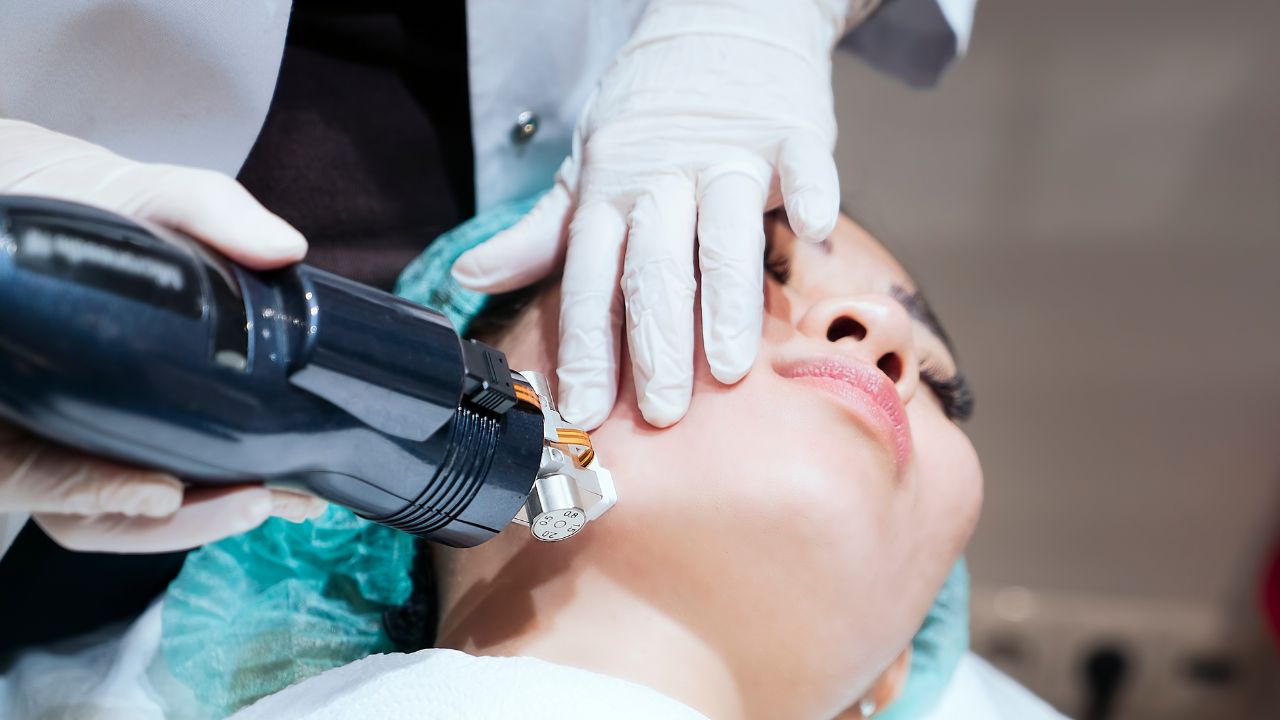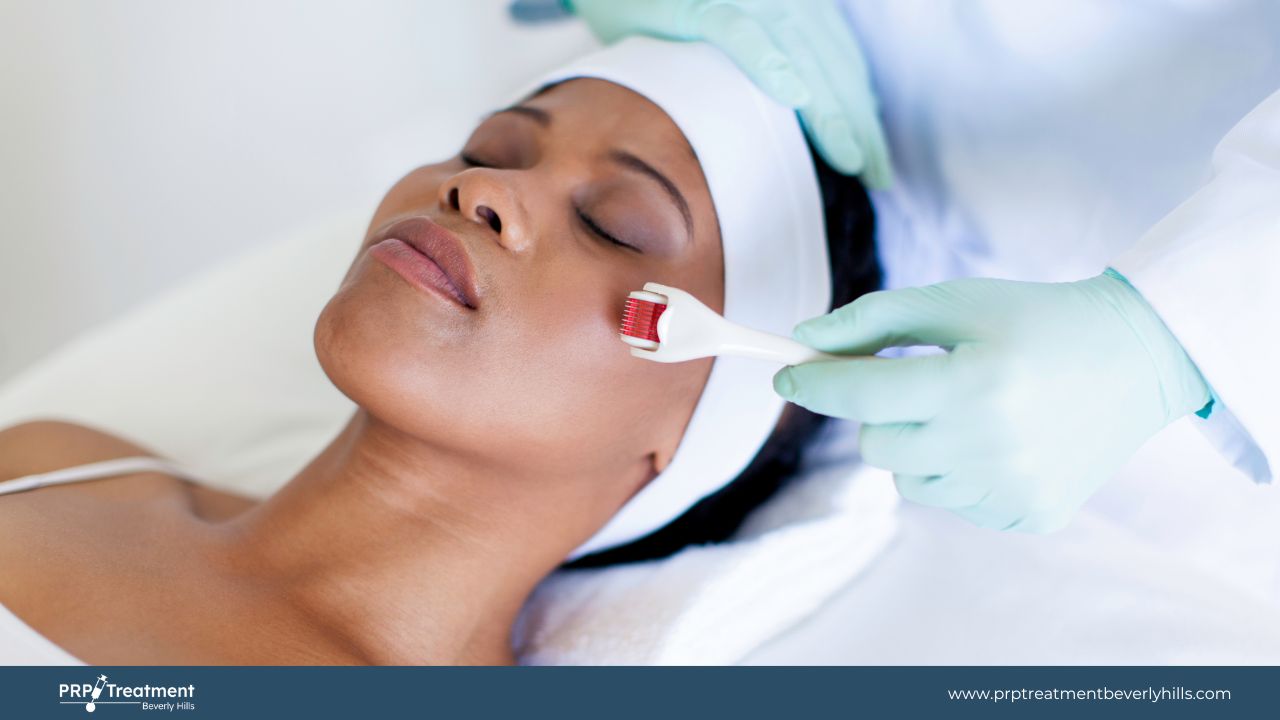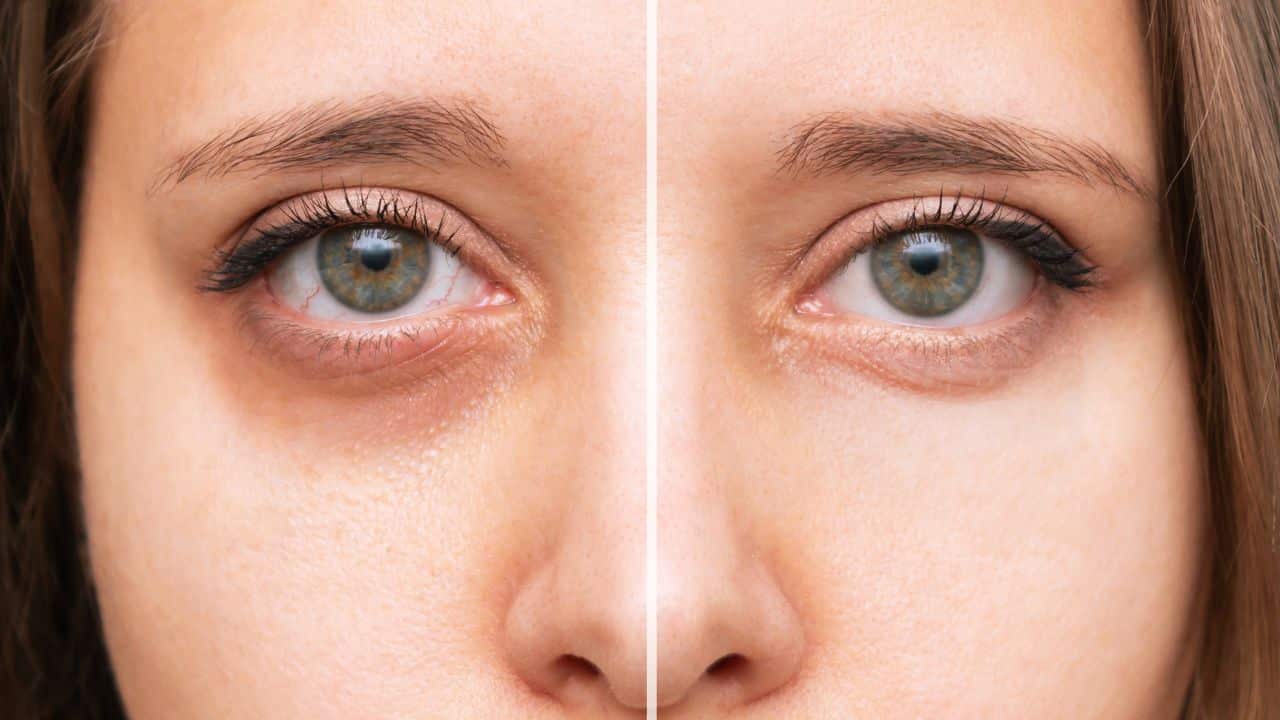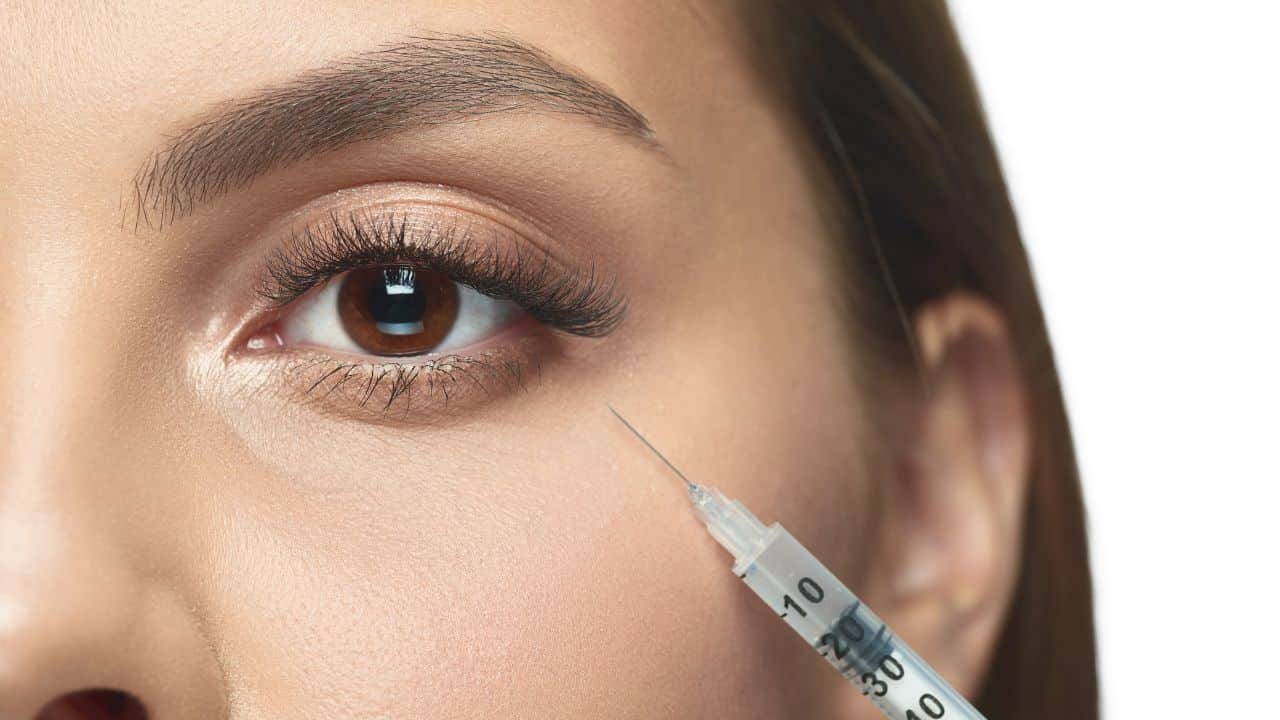Suffering from acne scars? Hold on! You are not alone in this journey. I know it can be mentally depressing to have such a deep hole-like texture on the skin’s surface.
Acne scars come in many shapes and sizes, and many of them can be extremely hard to treat with simple topical ointments or facials. If you’re looking for more effective ways to get rid of acne scars, you may want to consider PRP microneedling.
Microneedling with PRP (platelet-rich plasma) offers different benefits, including improved skin texture and brightness, reduced hyperpigmentation, and the elimination of acne scars. The procedures complement each other and are a minimally-invasive skin rejuvenation technique to resurface the skin.
In this article, we’ll explore these benefits in depth, as well as the science behind how PRP microneedling works to re-boost your self-esteem by fading acne scars from the skin.
Microneedling vs PRP for Skin
Microneedling is a procedure in which tiny needles are inserted into the skin. It has been used for many years to treat acne scars and can be an effective treatment for shallow or moderate acne scars. In PRP treatment, a small amount of your blood is drawn out of your arm with a needle. The plasma is then separated from the blood.
When these cells are injected back into your skin at various points on your face, they release growth factors that stimulate tissue regeneration. In addition to providing various other benefits, such as reducing inflammation and relieving chronic pain.

How Do PRP and Microneedling Work Together?
PRP and Microneedling are both minimally invasive, non-surgical procedures that use tiny needles to create micro-channels and plasma injections in the skin. PRP is a naturally occurring substance that doctors can extract from your blood or fat cells and then inject into the skin.
Together, these treatments break down scar tissue from acne breakouts and stimulate collagen production to diminish fine lines, wrinkles, and sun damage.
PRP is not a replacement for microneedling but can be used in conjunction with it as a complementary therapy. Microneedling will allow PRP to penetrate deeper into the layers of the skin.
There are three reasons that dermatologists may use this combination treatment:
- if there are a lot of large pores or broken capillaries near the surface
- when there are very deep acne scars or acne keloid scarring
- when there is active acne along with scarring and redness.
How Long Does It Take to See Results?
For each of the instances, one would recommend microneedling before applying PRP. Dermatologists usually recommend 5-6 treatments spaced two weeks apart to get optimal results.

People will experience different recovery rates, but the average patient can expect results in as little as three treatments. It is essential to keep in mind that not all patients respond the same way.
You can best talk with your doctor about what you’re looking for and see if PRP microneedling is a good option for you.
Side Effects of Doing Both PRP and Microneedling Together
There are no side effects of doing both PRP microneedling because they are mildly invasive.
However, you must speak with your doctor before trying a new treatment if you have a medical condition or are taking medication that may interact with the treatments. The best treatment is not to hide anything from your doctor!
As always, you can consult with me to determine what is best for your skin type and needs!
5 PRP Microneedling Benefits for Skin
PRP Microneedling is a skin resurfacing procedure that helps improve the appearance of scars by releasing growth factors into the skin. It also stimulates collagen production and reduces inflammation. This treatment can also be used to
- Improve acne scars, stretch marks, and wrinkles
- Stimulates collagen production
- Reduces Inflammation
- Improves the appearance of acne scars
- Improves the appearance of stretch marks
Who should avoid PRP Microneedling Treatment
Individuals with the following conditions should not use PRP microneedling treatment:
- Those who have skin cancer, lupus, or any other autoimmune disorder.
- People with an active herpes breakout.
- Those taking medications for thinning the blood
- Pregnant or nursing women.
Aftercare of Post PRP-Microneedling Treatment
After the treatment, your skin will be red. This is completely normal. Apply moisturizer gently to your skin as soon as possible to keep it hydrated.
You may also want to apply sunscreen before you go outside for prolonged periods so that the redness doesn’t worsen. If there are any scabs or broken skin, don’t touch them; let them heal naturally.
For any spots that are bothering you, avoid picking at them because they could become infected or lead to even more breakouts. Do not apply any active skin post-treatment before asking your dermatologist.
Microneedling for different types of acne scars
Microneedling is an effective treatment for acne scars. However, there are different types of acne scars, each requiring a different microneedling technique.
Here’s what you need to know about the difference between icepick, boxcar, and rolling scarring.
- The first type of scarring, called ice pick or deep, is characterized by deep pits. These should be treated with medium-depth PRP microneedles.
- Boxcar scarring, which is shallow but has a more widespread pattern than ice pick scarring, should be treated with short-depth PRP microneedles.
- The treatment has been shown to help minimize rolling acne scars with improved skin texture and quality.
- Together, these treatments can help with the appearance of keloid scars, the deepest acne scars. However, it won’t completely fade these deep scars but will reduce their appearance drastically.
Microneedling vs PRP for Acne Scars- One or Both?
Microneedling is one treatment for acne scars, but PRP may be better for you. That’s because microneedling can cause skin irritation, redness, and swelling, which could make it an unsuitable option for those with sensitive skin.
In contrast, PRP for acne scars doesn’t require any downtime or recovery time. A combination of microneedling and PRP is the best solution to treat acne scars.
If your skin is sensitive and prone to developing adverse reactions from treatments, opt for PRP only; if you have thicker skin that won’t react negatively to treatments, a combination of both will give the best and fast results.
Other Cosmetic Options for Treating Acne Scars
There are three other non-surgical options to PRP and microneedling that can be used to treat acne scars. These include dermaplaning, chemical peels, and laser treatments.
- Dermaplaning is a manual technique in which a scalpel removes the outermost layer of skin.
- Chemical peels use chemicals like alpha hydroxy acids (AHA), such as glycolic or lactic acid, or beta hydroxy acids (BHA), such as salicylic acid, to resurface the skin by loosening old outermost layers of skin cells and removing them without damaging the new layers below.
- Laser treatment uses high-energy light to target unwanted hair follicles or surface lesions like sunspots.
A consultation with a dermatologist is recommended before choosing any procedure to ensure you’re getting the one best suited for your needs. You can call us for a detailed consultation.
FAQ
Can PRP microneedling treat box acne scars?
Microneedling with PRP is a treatment that uses very fine needles to create tiny channels in the skin. When combined with microneedling, these two treatments provide a comprehensive approach to minimizing the appearance of box acne scars.
Can PRP microneedling treat ice-pick acne scars?
PRP Microneedling involves using a device with many tiny needles and plasma injections. The procedure creates microscopic channels in the skin and stimulates collagen production, which helps improve the appearance of ice-pick acne scars.
Is PRP microneedling effective for acne scars?
PRP microneedling is a type of microneedling that uses platelet-rich plasma, which is the blood that contains more platelets than normal blood. PRP is injected into the skin during the procedure and stimulates collagen production, which speeds up the healing process.
Final thought
Microneedling can be used with platelet-rich plasma (PRP) to smooth out and fade acne scars. As one of the best cosmetic treatments, microneedling with PRP (platelet-rich plasma) can help reduce the appearance of acne scars, stretch marks, and various other skin conditions that result in a less-than-flawless complexion.
If you plan to get it done, choose your aesthetician/ dermatologist wisely to get the best treatment possible.





